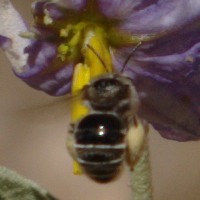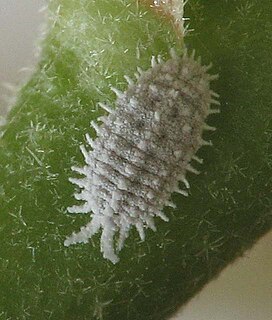
Rhizoctonia solani is a plant pathogenic fungus with a wide host range and worldwide distribution. It was discovered more than 100 years ago. R. solani frequently exists as thread-like growth on plants or in culture, and is considered a soil-borne pathogen. R. solani is best known to cause various plant diseases such as collar rot, root rot, damping off, and wire stem. R. solani attacks its hosts when they are in their early stages of development, such as seeds and seedlings, which are typically found in the soil. The pathogen is known to cause serious plant losses by attacking primarily the roots and lower stems of plants. Although it has a wide range of hosts, its main targets are herbaceous plants. R. solani is a basidiomycete fungus but the teleomorph stage is not prominent. Occasionally, sexual spores (basidiospores) are produced on infected plants. The disease cycle of R. solani is important in management and control of the pathogen. The pathogen is not currently known to produce any asexual spores (conidia), though it is considered to have an asexual lifecycle perpetuated through sclerotia.

The Tingidae are a family of very small insects in the order Hemiptera that are commonly referred to as lace bugs. This group is distributed worldwide with about 2,000 described species.

Gargaphia solani is a subsocial species of lace bug commonly known as the eggplant lace bug. The species was described by Heidemann in 1914 after it aroused attention a year earlier in the United States as an eggplant pest around Norfolk, Virginia. Fink found that the species became an agricultural pest when eggplant is planted on a large scale.

Rhizoctonia is a genus of anamorphic fungi in the order Cantharellales. Species do not produce spores, but are composed of hyphae and sclerotia and are asexual states of fungi in the genus Thanatephorus. Rhizoctonia species are saprotrophic, but are also facultative plant pathogens, causing commercially important crop diseases. They are also endomycorrhizal associates of orchids. The genus name was formerly used to accommodate many superficially similar, but unrelated fungi.

Capsus is a genus of mirid bugs belonging to the family Miridae, subfamily Mirinae.
Irbisia californica is a species of plant bug in the family Miridae. It is found in Central America and North America.
Irbisia is a genus of plant bugs in the family Miridae. There are more than 20 described species in Irbisia.
Irbisia sericans is a species of plant bug in the family Miridae. It is found in Europe and Northern Asia and North America.
Lema solani is a species of leaf beetle in the family Chrysomelidae. It is found in North America.
Irbisia pacifica, the Pacific grass bug, is a species of plant bug in the family Miridae. It is found in Central America and North America.
Irbisia mollipes is a species of plant bug in the family Miridae. It is found in North America.

Exomalopsis solani, the solanum exomalopsis, is a species of bee in the family Apidae. It is found in Central America and North America.

Phenacoccus solani, the solanum mealybug, is a species of mealybug in the family Pseudococcidae.
Irbisia brachycera is a species of plant bug in the family Miridae. It is found in Central America and North America.
Irbisia silvosa is a species of plant bug in the family Miridae. It is found in Central America and North America.
Orthotylus necopinus is a species of plant bug in the family Miridae. It is found in North America.
Megalopsallus marmoratus is a species of plant bug in the family Miridae. It is found in Central America and North America.

Halticotoma valida, the yucca plant bug, is a species of plant bug in the family Miridae. It is found in North America.
Irbisia serrata is a species of plant bug in the family Miridae. It is found in North America.

Leptoglossus gonagra, known as the passionvine bug, citron bug or squash bug in different parts of its range, is a species of leaf-footed bug in the family Coreidae. It is found in Africa, the Caribbean, Central America, North America, South America, Southern Asia, the Pacific Ocean and Oceania.








